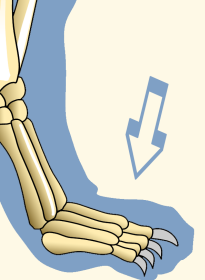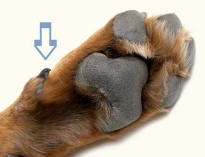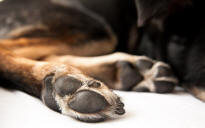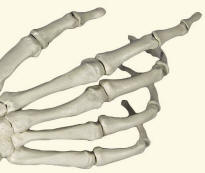Glossary

Digit
The distal parts of a limb, such as fingers or toes.
These are named and identified by Roman numerals.
In a pentadactyl (five-fingered or five-toed) arrangement, the most medial digit, if present, is I (e.g. the human thumb) and the most lateral is V (e.g. the human little finger).
These are named and identified by Roman numerals.
In a pentadactyl (five-fingered or five-toed) arrangement, the most medial digit, if present, is I (e.g. the human thumb) and the most lateral is V (e.g. the human little finger).
Pollex
The most medial digit of the forelimb.


Dew Claw
Vestigial and rudimentary digit of the foot.


Hind Foot
The foot of a caudal limb.


Thoracic Limb
Either of the cranial (anterior or front) limbs.
A limb that is attached to the thorax (the shoulder region).

A limb that is attached to the thorax (the shoulder region).

Phalanges Pedis
Bones of a digit or digits (toes) of the hind limb.


Title7
text
Phalanges
Bones of a digit or digits (fingers
or toes).


Title9
text
hover over shaded words to reveal more
Phalanges Manis
Bones of a digit or digits (fingers or toes) of the thoracic limb (forelimb).
The digits of cats of dogs, excluding the pollex (equivalent to the thumb), hallux (equivalent to the human big toe) and the dew claw, consist of three phalanges. These exceptions consist of two phalanges.
If present, a dew claw may contain up to two phalanges, but sometimes dew claws located on a hind foot may contain no bones.
Also known as thoracic phalanges.





